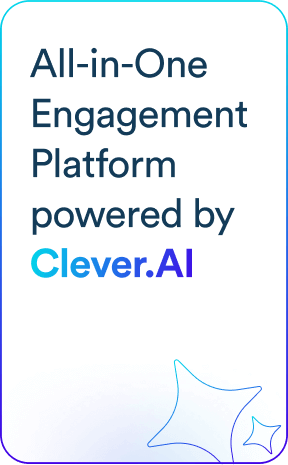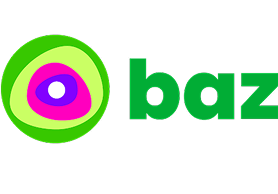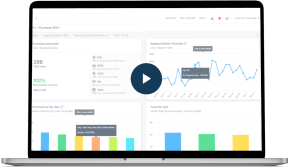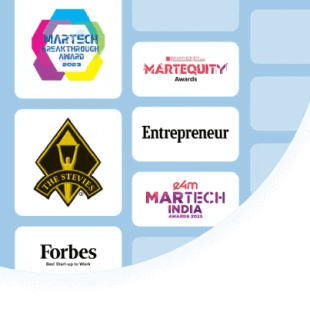The Shift in Human–Computer Interaction
For decades, the story of software design has been one of humans conforming their behaviour to work with computers. Interfaces evolved from form-heavy command-based UI to graphical dashboards of clicks, taps, and swipes. Each step lowered friction but still required people to undergo steep learning curves, memorize workflows, and navigate dozens of menus and buttons.
With AI, the design philosophy flips. For the first time in history, software systems will now learn from humans, not the other way around. Instead of navigating menus, users can express intent in plain language and see the system execute. This is more than efficiency; it’s a fundamental paradigm shift in how we interact with technology.
At CleverTap, First Principle Thinking is a core value. We break problems down to their fundamental units and build solutions from there. Applied to SaaS design, the question became simple: What if software revolved around intent, not clicks?
The answer is the Interface-of-Intent. A new way of interacting with our dashboard where prompts replace clicks. Where software becomes a collaborator, not a hurdle.
From Clicks to Prompts
Traditional UI forced users to know where to click and what to configure. It was rigid. Often unintuitive. Usually linear. Always involving a learning curve.
AI-first interfaces flip that. The interface bends to intent. Outcomes adjust in real time.
“With the new AI systems, the user no longer tells the computer what to do. Rather, he or she tells the computer what outcome they want.” – Jacob Neilson
Think about how much time marketers waste navigating dashboards just to answer basic questions. Instead, they can simply ask:
- “Show me users who are likely to churn in the next 7 days.”
- “Create an onboarding journey for new customers.”
- “Draft a re-engagement campaign for inactive users via push and email.”
The result is less friction, faster outcomes, and a more human way of working with software systems.
Philosophy behind Interface-of-Intent
The Interface-of-Intent design system is built on four First Principles:
- Focus on Use Case and Intent
The interface should strip away complexity so users can concentrate on the outcome they want, not the mechanics of how to get there. AI becomes the bridge between intent and outcome. - Transparency as the Default
Trust is built when users see why AI makes certain recommendations. By embedding explainability, it ensures that AI is not a hidden layer but a transparent collaborator. This goes a long way in establishing transparency and, therefore, building trust in the system. - Manual Editability Everywhere
AI accelerates workflows, but human creativity and judgment remain central. Every AI-generated output in CleverTap is fully editable within the existing toolset, ensuring users never lose control. - Modular, System-Wide AI
AI is not a bolt-on feature; it’s a design layer. It can be plugged into any workflow across the product. This modularity makes the entire platform fluid, intuitive, and future-proof, setting a new industry benchmark for scalable design.
Together, these principles establish Interface-of-Intent as a paradigm shift in human-machine interactions.
The Three-Panel Architecture: Turning Philosophy into Practice
Philosophy matters only when it shows up in design. At CleverTap, the Interface-of-Intent lives inside a three-panel architecture:
- Ask AI: the space where intent becomes the input. Marketers type in plain language, and the system understands and provides output accordingly.
- Explain AI: the panel that makes reasoning visible. Every recommendation comes with an explanation anyone can follow and rectify or improve.
- Insights Panel: the hub for context, making adjustments and choosing next best actions, where metrics enable decisions.
Together, these panels create flow: intent leads to action, action comes with reasoning, and reasoning drives insight.
For marketers, it rewires the workflow: ask instead of navigate, see the reasoning instead of guessing, act on insight instead of juggling tabs.
Prompting as a Design Discipline
Prompting is quickly becoming a core skill for marketers. The way you frame a request shapes the quality of the outcome. A vague prompt produces inaccurate or generic results. A precise prompt delivers results that are quicker and on-brand.
“AI is a manifestation powered by code. It gives you exactly what you wish for.” – Geetaa Bhat
To guide prompting in marketing automation, we distilled seven Golden Rules, each with practical ways to apply them:
- Be audience-centric.
Instead of “Send an email,” say “Send a reactivation email to users inactive for 30+ days.” - Specify the outcome, not just the action.
Ask for the “why”: “Generate a campaign to increase repeat purchases among premium users.” - Keep inputs modular.
Break complex flows into steps: first “Identify high-churn risk segments.” Next, “Recommend the best channel to reach them.” - Provide contextual signals.
Anchor with detail: “Optimize push notifications for weekend engagement with a 10% CTR goal.” - Iterate instead of instructing once.
Treat AI like a design partner: start broad with “Draft a campaign outline,” then refine with “Simplify the copy for push.” - Avoid ambiguity.
Replace vague asks like “Improve my campaign” with specific ones: “Shorten subject lines to under 40 characters.” - Balance human creativity with AI scale.
Use AI to generate five subject line variations, then refine the tone to match your brand voice.
These rules transform prompting from guesswork into a discipline — the same way design systems once codified best practices for graphical interfaces.
Control and Trust by Design
Every new paradigm change faces resistance. With AI-first design, the main concern is loss of control. People worry about hidden decision-making or automation that runs ahead of them, or even potential job loss.
The Interface-of-Intent addresses this with prompt observability:
- Every prompt has an ID and version history.
- Policy checks flag ambiguity.
- Transparency receipts show inputs, parameters, and reasoning.
- Rollback controls make every AI action reversible.
- Trust in the output of the system isn’t default and is instead configured and built up, in iterations.
The promise is simple: AI accelerates outcomes, humans remain in charge.
Hybrid Workflows: Humans + AI in Tandem
We are still scratching the surface of AI-first interfaces. The goal is not to replace human decision-making, but to amplify it with speed, automation, and more natural ways of working.
That future looks hybrid. Some tasks are quicker with a click, others are better expressed as a prompt. The real power comes when the two blend fluidly. In action it looks like, a manager filtering churn-risk cohorts with a few clicks, then prompting AI to surface anomalies, recommend interventions, and model possible outcomes. The clicks provide speed; the prompt adds depth.
- Campaign content: A marketer drafts the campaign intent. AI generates segments, subject lines, and timing recommendations. The marketer reviews, edits, and approves.
- Design & creative: A designer sketches a rough layout or uploads a sample image. AI proposes variations, palettes, or animation styles and creates a draft quickly. The designer then curates the best fit.
This balance delivers efficiency without erasing creativity. It keeps people in control while letting AI do the heavy lifting.
Agentic Systems: Proactive, With Oversight
Looking further ahead, agentic systems will extend the Interface-of-Intent. The purpose of these AI agents is to connect disparate systems and orchestrate AI operators to execute instructions. These systems not only respond, they act proactively with human oversight:
- Proactively launching retargeting campaigns based on analysis of data.
- Accurately predicting inventory shortages and placing restock orders.
- Understanding user sentiment in real time and contextually nudging them with personalized follow-ups automatically.
AI is moving from pilots to measurable ROI at scale. The winners will be those who design for proactive agents without compromising transparency or control.
Designing for the Next Decade
The question isn’t whether AI will redefine interfaces – it already is. The question is how we design for it to optimise for the jobs to be done.
Right now, chatbots are the most visible face of AI-first interaction. But new use cases are emerging fast: Vision AI that turns a photo into a product search, scribbles-to-action tools that transform rough sketches into designs, and multimodal systems that combine text, voice, and images in a single interface. We don’t know exactly what the next decade will bring, only that interaction models will keep multiplying.
At CleverTap, our commitment is to build AI that feels natural, explainable, and empowering. we’re reimagining what it means to interact with technology—not through clicks, but through understanding and intent.
AI-first interfaces make tools easier to use by letting people simply ask for what they need, instead of learning complicated menus or processes. This shorter learning curve helps new users get value quickly, builds confidence, and encourages more people to start using the tool, leading to faster and wider adoption.
The future of interfaces isn’t about teaching humans how to use software. It’s about designing software that understands humans.
Geetaa Bhatt 
Geetaa Bhatt, VP of Product and Brand Design at CleverTap, has 18+ years in design. Known as a 'right-brain engineer,' she merges technology with design to create innovative solutions.
Free Customer Engagement Guides
Join our newsletter for actionable tips and proven strategies to grow your business and engage your customers.














































